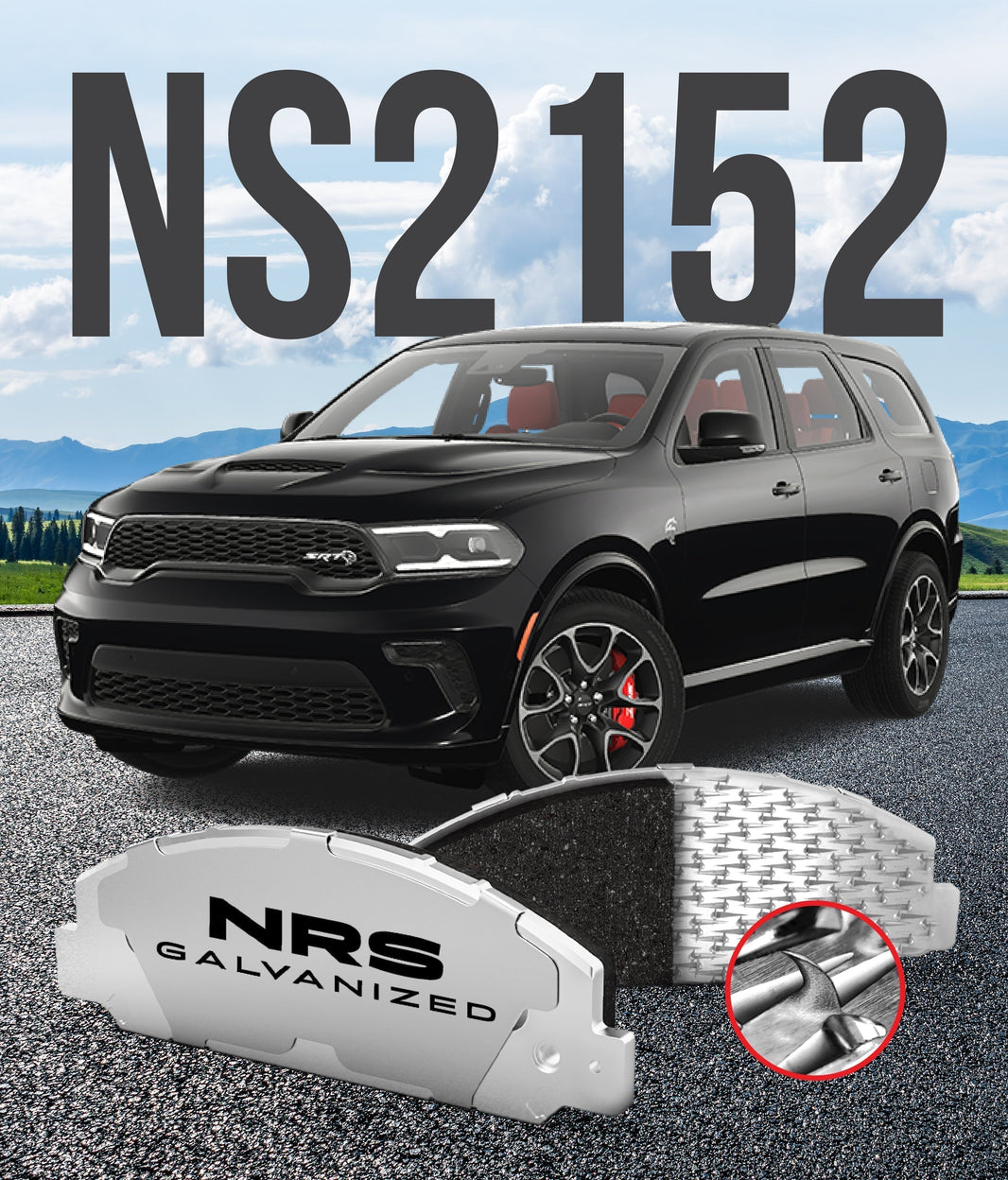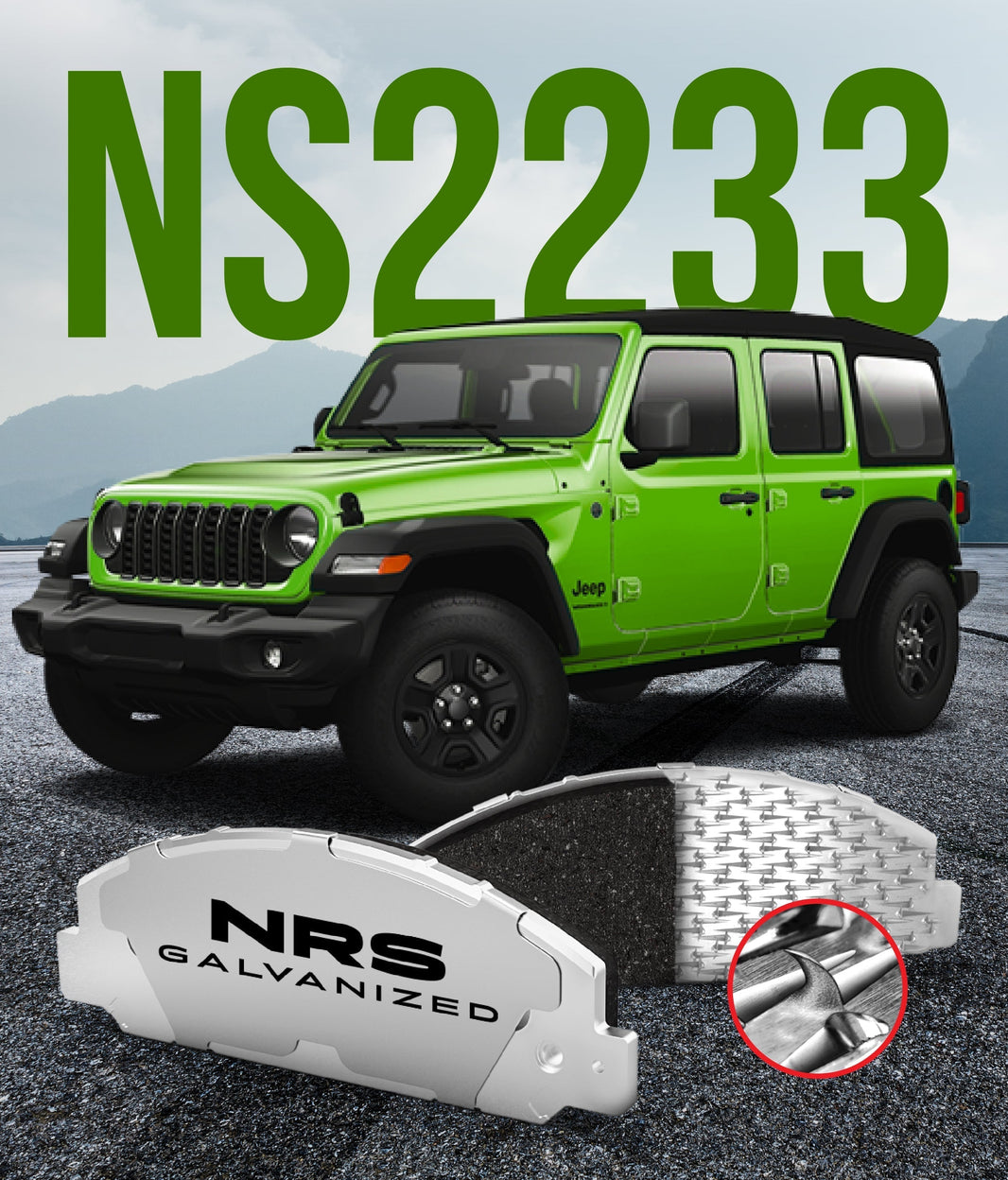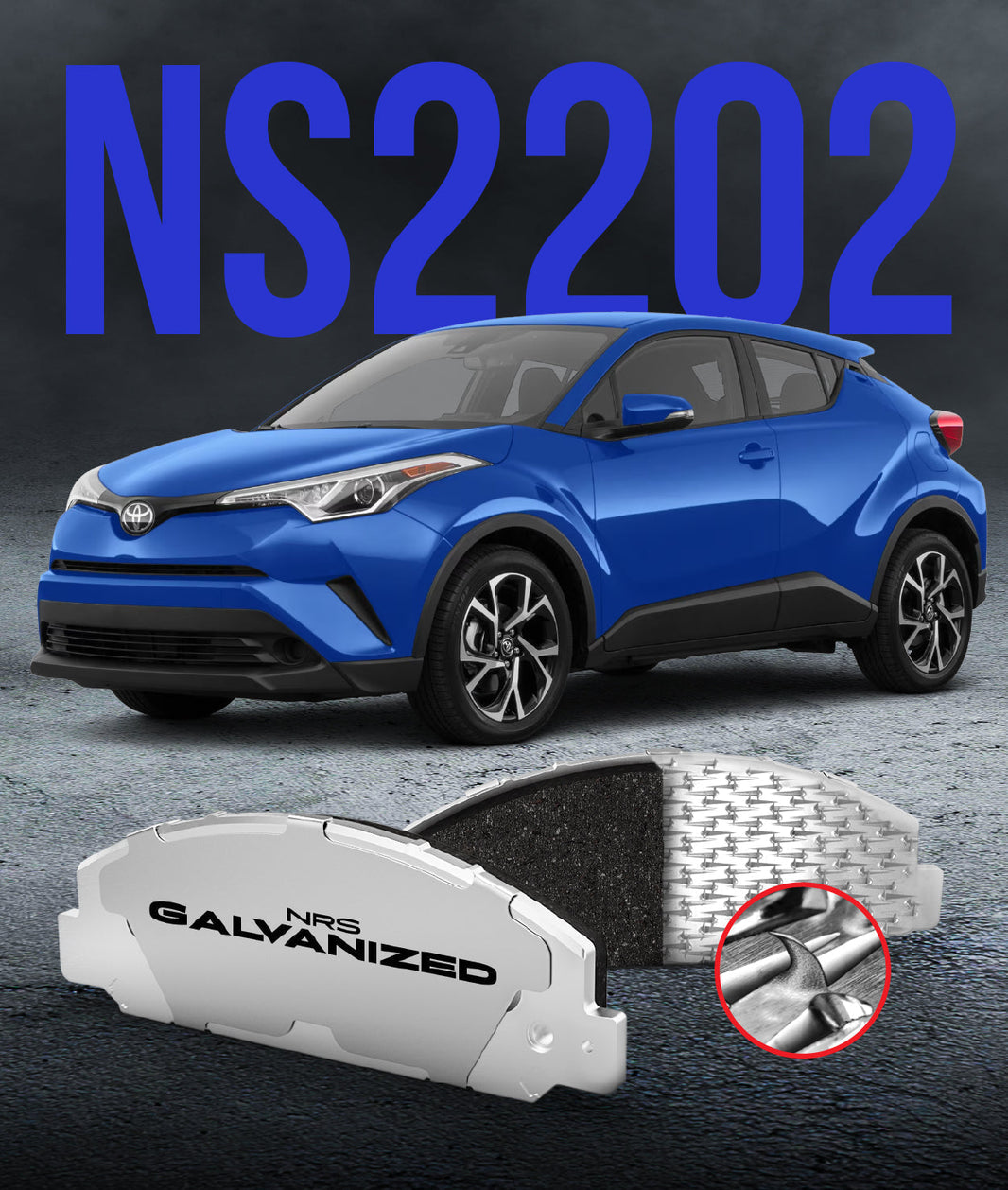
Few sounds produced by a car are as universally grating, and potentially worrying, as noisy brake grinding or squealing. That high pitched squeal as you approach a stoplight, the intermittent screech, or worse, a grinding groan – these noises aren't just annoying to the ears; they can erode driver confidence and sometimes signal underlying problems. In the pursuit of a refined driving experience and peace of mind, many drivers seek out quiet brake pads. But what actually makes a brake pad quiet? and how NRS Brakes earned a reputation for producing pads that are considered to be the quietest brake pad on the planet.
Lets jump into the science behind brake noise, exploring the root causes. Lets examine the specific engineering solutions implemented by NRS Brakes, including their innovative noise canceling piston inserts and foundational construction features, to understand how they achieve remarkably quiet operation. Are you ready to learn the secrets behind silencing brake noise for good?
Understanding Brake Noise: The Physics of the Squeal
Before we can appreciate quiet brakes, we need to understand why brakes make noise in the first place. At its core, brake noise is almost always caused by high frequency vibrations. These vibrations occur within the complex interface where the brake pad meets the rotor, influenced by the caliper, mounting hardware, and even the suspension components. Think of it like rubbing a wet finger around the rim of a wine glass – the friction causes vibrations that resonate and produce an audible tone.
Several factors can initiate or worsen these noise inducing vibrations:
-
Friction Material Formulation: The specific compounds used in the brake pad itself can influence its tendency to vibrate at audible frequencies.
-
Pad/Rotor Surface Condition: Glazing (hardening of the surfaces due to excessive heat), uneven wear, or rust on the pad or rotor surfaces can create points where vibrations are easily generated.
-
Component Resonance: Different parts of the brake assembly (pads, rotor, caliper) have natural resonant frequencies. If braking forces excite these frequencies, noise occurs.
-
Loose or Worn Hardware: Worn or improperly installed anti rattle clips, shims, or caliper pins allow for excessive movement and vibration.
-
Caliper Piston Interface: As the seed content notes, "The brake caliper/brake pad rotor interface is often the main culprit of noise coming from the brake system." The direct contact point between the caliper piston(s) and the brake pad backing plate is a critical area for vibration generation and transmission. Hence the important of a better bond between backing plate and friction material.
While some occasional, minor brake noise can be normal under certain atmospheric conditions (like damp mornings), persistent or loud squealing, grinding, or groaning indicates an issue that needs addressing, either through maintenance or by choosing better engineered components.
The NRS Approach: A Multi Faceted Strategy for Silence
NRS Brakes tackles the problem of brake noise not just by tweaking friction materials, but through a comprehensive engineering strategy that addresses the root causes of vibration at multiple levels. Producing the quietest pads stems from innovative design features combined with a fundamentally robust pad construction.
While many manufacturers focus primarily on shim technology or friction formulations, NRS recognized that a truly quiet pad requires a more holistic approach. This involves managing vibrations at the critical piston interface while also ensuring the pad itself is inherently stable and resistant to noise inducing movement. This led to the development of specific noise canceling technology working in concert with their core pad construction.
Deep Dive: The NRS Noise Canceling Piston Insert
The cornerstone of NRS Brakes' dedicated noise reduction technology, as highlighted in the seed content, is the inclusion of noise canceling piston inserts with their pads. These aren't just standard shims; they are specifically engineered devices designed to actively combat noise generation.
According to NRS, these inserts work by directly addressing the primary causes of audible brake noise: friction and vibration at the piston contact point. The insert material and design are optimized to absorb these vibrational forces, effectively dampening them before they can resonate through the brake assembly and become audible squeal. Think of it like putting a shock absorber directly between the caliper piston and the brake pad backing plate. NRS claims this technology is remarkably effective, potentially reducing brake noise by up to 90%. Furthermore, these inserts are designed for broad compatibility, fitting "every open piston application," and feature a user friendly design that "easily snaps into place," simplifying installation for technicians. This proprietary feature serves as a barrier between the brake caliper piston and the pad backing plate, effectively de-coupling vibration — the root cause of most brake noise. By isolating the vibration at the source, the Piston Cushion virtually eliminates squealing while also helping to minimize heat transfer, which can further reduce brake system wear. This isn’t just marketing — NRS Brakes has conducted extensive lab and field testing to prove the effectiveness of this groundbreaking technology. You can view the full results and testing data here.
Beyond the Insert: Foundational Quietness – Galvanized Steel & NRS Hooks
While the noise canceling piston insert provides targeted vibration damping, its effectiveness is significantly enhanced by the inherent stability and quietness built into the core construction of every NRS brake pad. A quiet insert needs a quiet foundation to work optimally.
- Galvanized Steel Backing Plates: Traditional painted or uncoated backing plates are highly susceptible to rust, especially in wet or salty conditions. Rust creates an uneven, unstable surface on the backing plate. This rough, corroded surface provides an ideal breeding ground for vibrations when the caliper piston applies pressure, and can even interfere with the proper seating of shims or inserts. NRS Brakes exclusively uses galvanized steel for its backing plates. This zinc coating provides exceptional corrosion resistance, maintaining a smooth, flat, and stable surface throughout the pad's life. This eliminates rust as a source of vibration and ensures the piston insert can function optimally on a clean, solid base.
- Patented NRS Hooks Mechanical Attachment: Perhaps the most significant contributor to the foundational quietness of NRS pads is their unique attachment method. Traditional pads rely on adhesives to bond the friction material to the backing plate. Over time, under heat and pressure, or if compromised by rust, this adhesive layer can allow for tiny micro movements or vibrations between the friction material and the steel plate – a major source of noise. NRS Brakes eliminates this weakness with its patented NRS Hooks. Hundreds of small, sharp hooks are mechanically formed into the galvanized backing plate. The friction material is molded around these hooks, creating an inseparable physical interlock. As NRS states, this "patented galvanized mechanical attachment eliminates chances of separation," which also means it eliminates the micro vibrations associated with adhesive bonding. This incredibly secure, stable attachment ensures the pad acts as a single, solid unit, drastically reducing its inherent tendency to vibrate and generate noise.
The synergy is key: The noise canceling insert targets vibrations at the piston interface, while the galvanized steel and NRS Hooks create an inherently stable, non vibrating pad structure. It's a two pronged attack on brake noise.
Friction Material Formulation: The Final Piece of the Puzzle
While the mechanical construction and piston insert are paramount, the choice of friction material formulation also plays a role in achieving quiet operation. Different materials have different frictional characteristics and harmonic properties.
NRS Brakes, leveraging their extensive research and development and 30 years of OE supplier experience, selects and develops friction material compounds that are optimized not only for stopping power and longevity but also for their noise characteristics. The goal is to create a material that provides excellent braking performance without generating excessive high frequency vibrations. By combining these carefully chosen friction materials with their advanced mechanical attachment and noise canceling inserts, NRS aims for a complete quiet braking solution.
The Result: A Symphony of Silence (Relatively Speaking)
When all these elements – the noise canceling piston insert, the rust resistant galvanized steel backing plate, the vibration eliminating NRS Hooks mechanical attachment, and optimized friction materials – work together, the result is a brake pad that operates with remarkable quietness.
This combination directly targets and mitigates the primary sources of brake noise: vibration at the piston interface and inherent vibration within the pad structure itself. This is why NRS can confidently claim their pads are among the quietest available, a sentiment often echoed in customer testimonials. While no brake system can be perfectly silent under all conditions (light surface rust after rain can cause temporary noise on any brake), NRS pads are engineered to eliminate the persistent, annoying squeals and groans often associated with braking. It's about achieving consistent, confidence inspiring silence under pressure.
Why Quiet Matters: More Than Just Avoiding Annoyance
Sure, nobody likes hearing their brakes squeal, but the benefits of genuinely quiet brake pads extend beyond just eliminating an irritating noise. It adds a layer of refinement to the driving experience.
Quiet operation often signifies a properly functioning, high quality braking system, giving the driver greater confidence. Conversely, noisy brakes can be distracting and create unnecessary anxiety. Furthermore, in today's increasingly quiet vehicles, especially EVs and luxury cars, brake noise becomes much more noticeable and intrusive. Achieving quiet braking contributes significantly to the overall perceived quality and refinement of the vehicle. Finally, the absence of chronic brake noise makes it easier to hear other potentially important sounds your vehicle might be making.
We at NRS Brakes understand that drivers expect more than just stopping power from their brakes; they expect quiet, smooth, reliable performance. That's why we've invested heavily in engineering solutions that directly address the root causes of brake noise. Our noise canceling piston inserts, combined with our foundational technologies of galvanized steel backing plates and patented NRS Hooks mechanical attachment, work synergistically to deliver what many consider the quietest braking experience on the market. We believe that providing the Best Brake Pads means delivering on all fronts: safety, longevity, and quiet operation. Choose NRS Brakes, and experience the sound of silence under pressure.




